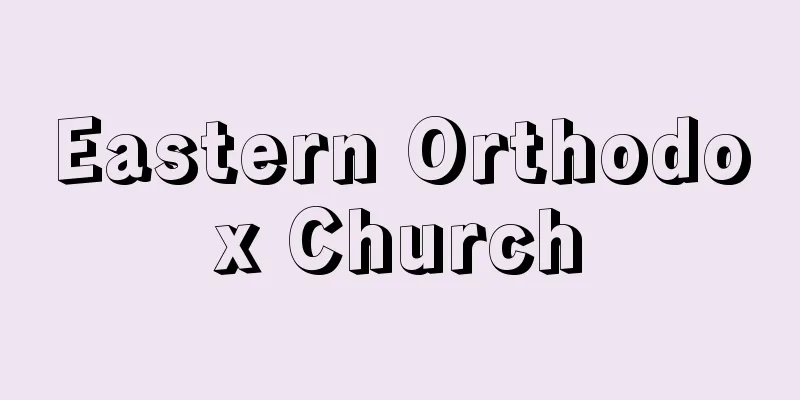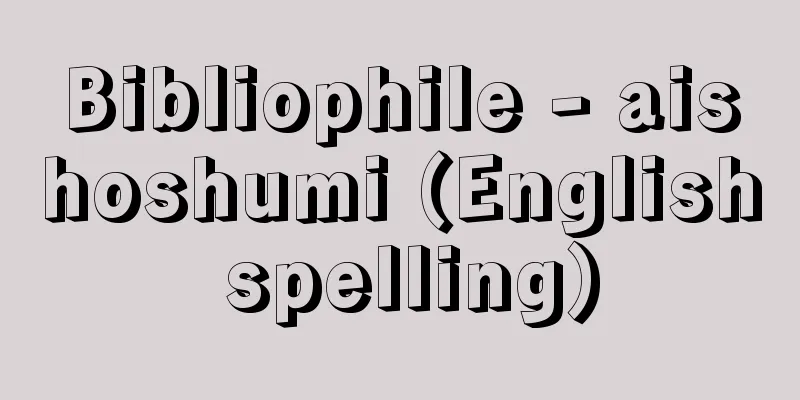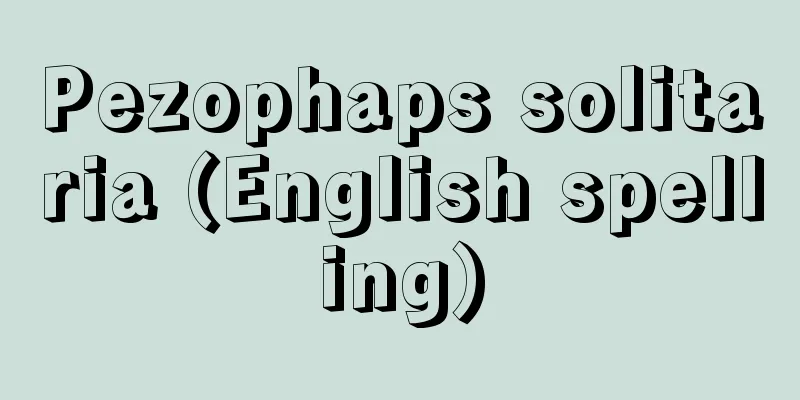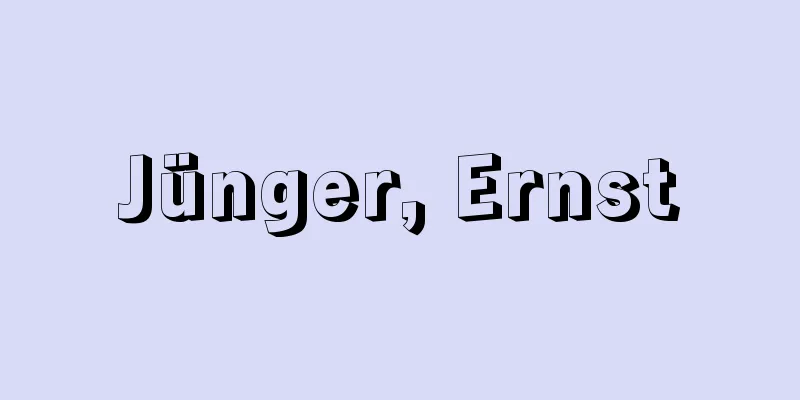Eastern Orthodox Church

|
It is one of the three major denominations of Christianity, along with the Catholic Church and the Protestant churches. In Japan, it is also called Greek Orthodoxy or simply Orthodoxy. In a broad sense, the Eastern Church includes Christian heretical groups such as the Nestorian Church, which later entered China and came to be called Jingjiao, the Armenian Church, which is considered to be Monophysite, the Coptic Church in Egypt, and the Ethiopian Church. However, when referring to the Eastern Orthodox Church, it refers to the Eastern Church in the narrow sense, that is, a federation of 18 independent churches, mainly in the Middle East, Eastern Europe, and Russia. In Japan, the Eastern Orthodox Church is generally less familiar than the other two major denominations, the Catholic Church and the Protestant Church. However, the Eastern Orthodox Church originally inherited the traditions of the ancient church and has well conveyed the spirit of primitive Christianity. The ancient church originated in the Roman Empire and divided all dioceses into five major dioceses: Jerusalem, Alexandria, Antioch, Constantinople (now Istanbul), and Rome. Among them, only the Church of Rome separated from the others in the 11th century and was established as the Roman Catholic Church. The other churches in the Eastern Roman (Byzantine) Empire came to be called the Eastern Orthodox Church. Later, in the mid-15th century, the Byzantine Empire was destroyed by the Ottoman Empire. Instead, Russia became the major power of Eastern Orthodoxy. [Sadao Taguchi] History and essenceThe Christianity preached by Jesus was a world religion that went beyond the ethnic religion of Judaism, and therefore did not fit into the nationalistic system of the Roman Empire, and Jesus was eventually crucified. However, he resurrected three days later, and ascended to heaven again 40 days later. Eventually, the apostles Peter, Paul and others who met the resurrected Jesus spread the gospel of the resurrection of Christ throughout the Roman Empire. In the Roman Empire, Christians were initially persecuted and many became martyrs, but in 313, they were finally officially recognized by Emperor Constantine the Great (I). The more they were oppressed, the stronger their unity became. The areas where Christianity spread were mostly influenced by Greek culture, but the diocese of Rome was in a culturally backward area and had many contacts with barbarians in the north, so the patriarch of Rome could not rely solely on religious authority like other patriarchs, and he called himself the Pope (North Papacy) because he needed political authority. Seven Ecumenical Councils were held in Nicaea, Constantinople, Chalcedon, and elsewhere (325-787) to decide on the main points of the faith of the ancient church. The main points decided were that Christ was a perfect God and a perfect human being born on this earth to save mankind, and that his two natures, divinity and humanity, were inseparable and could not be distinguished from one another. Several theories were declared heretical. The theory of Arius, who denied the identity of God the Father and Christ the Son, was declared heretical at the Council of Nicaea (325), the theory of Nestorius, who emphasized the humanity of Christ, was declared heretical at the Council of Ephesus (431), and conversely, the monophysite doctrine of Alexandrian theologians, who emphasized the divinity, was declared heretical at the Council of Chalcedon (451). In addition, within the church centered around the Patriarch of Constantinople, an iconoclasm movement occurred in the 8th and 9th centuries, and it was eventually decided that the destruction of holy images was a heresy. A political rift also developed between the Eastern and Western churches. The coronation of the Frankish king Charlemagne by Pope Leo III (800) was a rebellion against the power of the Roman Empire, and Pope Nicholas I rebelled against the election of Photius, a diplomat, as patriarch in Constantinople. There were also doctrinal disputes. The East criticized the Romans for adding "and from the Son" (filioque) to "from the Father" in the Nicene Creed, which was a reference to the emanations of the Holy Spirit (God). The East also opposed Roman practices such as the prohibition on marriage for clergy and the use of unleavened bread for the Eucharist. These factors combined to cause the ancient church to split into East and West around 1054, and when Western European soldiers of the Fourth Crusade attacked Constantinople in 1204, the West became the Western Catholic Church and the East became the Eastern Orthodox Church. As Western Christianity became hostile to the Byzantine Empire, the conflict between the two churches deepened. Constantinople was destroyed by the Ottoman Empire in 1453, and the Eastern Orthodox Church under the Patriarch of Constantinople was under Turkish rule for about 350 years until Greece gained independence from Turkey in the mid-19th century. Thus, while the Byzantine Empire was under Turkish domination, Russia took its place as the great protectorate of the Orthodox Church. The current Eastern Orthodox Church consists of 18 autonomous churches in Constantinople, Antioch, Alexandria, Jerusalem, Bulgaria, Russia, Georgia, Serbia, Romania, Greece, Cyprus, Ukraine, Poland, Czech Republic, Slovakia, Finland, the United States, and Japan. Churches have also been established in Western Europe by immigrants and refugees. The Orthodox Church was introduced to Japan in 1861 (Bunkyu 1) by Nicholas. The total number of Orthodox believers is estimated to be around 200 million. [Sadao Taguchi] DoctrineThe Eastern Orthodox Church is originally a continuation of the ancient church and is faithful to the spirit of primitive Christianity. Compared to Western Christianity, Eastern Orthodoxy is said to value love over righteousness, resurrection over the cross, and salvation over sin. God and man are one, not separate. While Western Christianity distinguishes between the sacred and the secular, places the superiority of the spirit over the material, and tends to separate church and state, Eastern Orthodoxy is characterized by the unity of the sacred and the secular, the unity of the spirit and the flesh, and the unity of church and state. Also, while Catholicism recognizes purgatory and preaches the doctrine of the Immaculate Conception of Mary, Orthodoxy does not recognize purgatory or preach the doctrine of the Immaculate Conception of Mary. While Catholic theology is speculative and systematic, and studies God intellectually, Orthodox theology is theology as a faith experience. Eastern Orthodox theology is about living in Christian culture and learning about God through experience. In Orthodox theology, theology is presented in the form of hymns, icons, church rules, letters from bishops, and sermons rather than as treatises. Quietism (Hesychasm) was advocated by Saint Palamas (1296-1359) from Mount Athos. It is a monastic method in which one recites the "Jesus Prayer" in silence and meditates on God, and is representative of Byzantine theology. [Sadao Taguchi] OrganizationIn terms of church organization, the Eastern Orthodox Church is less authoritarian than the Catholic Church. The Catholic Church believes in the infallibility of the Pope, has a pyramidal structure with the Pope at the top, and ordinary believers are called laity. On the other hand, the Orthodox Church does not believe in the infallibility of the Pope, but in the infallibility of the Church, bishops and priests have no personal authority, and ordinary believers are not called laity. The clergy in the Eastern Orthodox Church are bishops, priests, and deacons. Priests and deacons are divided into monastic and secular, and monastic priests and monastic deacons do not marry. Those who hold the rank of bishop or above must be monastic priests. Above the bishop position are archbishops, metropolitans, and patriarchs. [Sadao Taguchi] LiturgyIn the Eastern Orthodox Church, the standard for church life is called Sacred Tradition. Sacred Tradition includes the Bible, the decisions of the Ecumenical Council, the writings of the Holy Fathers, the liturgy, hymns, icons, etc. Among them, the liturgy (also called the Little Gaia, Divine Liturgy, or Public Prayer) is the most important. It is the duty of those who serve God, and it allows believers to live their lives in the way Christ lived, and it provides believers with wisdom and guidance for life. Liturgies include the rite of initiation (baptism), the Eucharist (eating wine and bread, and sharing the blood and flesh of Christ), rites of life, and rites of the hours. Those who participate in the liturgy are aware that the Bible is both a scripture and a book of hymns. In the Eastern Orthodox Church, no musical instruments are used when chanting hymns. Hymns are prayers from the heart, and do not require musical instruments. Also, icons are holy pictures of Christ, Mary, saints, etc., and believers worship what is depicted on the icons. Orthodoxy places emphasis on salvation over sin, and resurrection over the cross, and the most important festival is Easter, not Christmas as in Western Christianity. It is also called Pascha or Passover. By participating in this festival, believers remember that the process of humans passing from the end of this world to life in the next world was made possible by the resurrection of Christ. Generally, the rituals of the Eastern Orthodox Church have a stronger oriental color than those of Western Christianity, and are said to suit the Japanese skin tone. [Sadao Taguchi] Orthodox Church in JapanIts official name is the Japanese Orthodox Church. "Harisutosu" is the Greek pronunciation of Christ. It was Nikolai who introduced Orthodox Christianity to Japan in 1861 (Bunkyu 1), who came to Japan as a priest attached to the Russian consulate in Hakodate (Hakodate). While studying at the St. Petersburg Theological University, he read Golovnin's "A Journal of a Prisoner in Japan" and fell in love with Japan. After arriving in Japan, he studied Japanese language, Japanese history, Confucianism, Buddhism, Shintoism, and other subjects. In 1872 (Meiji 5), he moved to Tokyo and worked enthusiastically to spread the faith and introduce Russian culture. Nikolai-do (Tokyo Resurrection Cathedral) in Kanda, Tokyo was built by him in 1891, and it is said that he received a donation from his friend Dostoevsky. During Nicholas's tenure, there were unfortunate events between Japan and Russia, such as the Otsu incident in 1891 and the Russo-Japanese War in 1904 (Meiji 37), but Nicholas's behind-the-scenes efforts to promote friendship between the two countries were great. When he passed away in 1912, Emperor Meiji and other figures in the Japanese government and opposition mourned his death. After Nicholas, Bishop Sergius Tikhomirov continued his missionary work, but the Russian Revolution occurred in 1917 (Taisho 6) and support ceased. Meanwhile, in the Showa era, Japan entered an era of militarism, and a Japanese bishop was elected. Tikhomirov retired (1940), and died in obscurity in 1945, the year the war ended. After World War II, due to the international situation, the Japanese Orthodox Church came under the jurisdiction of a bishop sent from the Independent Church in America, but in 1970 (Showa 45), it received the blessing of the Holy Autonomous Autonomous Church (Autonomia) from the Patriarch of Moscow. [Sadao Taguchi] [References] | | |It originated as a church attached to the Russian consulate, built in 1860 (Man'en 1). In 1861 (Bunkyu 1), Russian Orthodox missionary Nikolai came to Japan and became the consulate's priest. It burned down in 1907 (Meiji 40), and the current building in Russian Byzantine style was rebuilt in 1916 (Taisho 5). Nationally designated important cultural property Hakodate City, Hokkaido © Hakodate City Yunokawa Onsen Ryokan Association Hakodate International Tourism and Convention Association "> Hakodate Orthodox Church Source: Shogakukan Encyclopedia Nipponica About Encyclopedia Nipponica Information | Legend |
|
カトリック教会、プロテスタント諸教会と並ぶキリスト教三大教派の一つ。日本ではギリシア正教または単に正教ともいう。広義の東方教会は、のちに中国へ入り景教とよばれるようになるネストリウス教会や、キリスト単性論とみなされるアルメニア教会、エジプトのコプト教会、エチオピア教会など、キリスト教の異端グループを含む。しかし、東方正教会という場合は狭義の東方教会、すなわち、中東、東欧、ロシアを中心とする18の自立教会の連合体をいう。日本では東方正教会は、他の二大教派のカトリック教会、プロテスタント諸教会と比べて一般になじみが薄い。だが、東方正教会は元来、古代教会の伝統を受け継いでおり、原始キリスト教の精神をよく伝えてきた。古代教会はローマ帝国に発生し、全教区をエルサレム、アレクサンドリア、アンティオキア、コンスタンティノープル(現、イスタンブール)、ローマの五大総主教区に分けた。そのうちローマ教会だけが11世紀に他から分離し、以来ローマ・カトリック教会として発足した。他の東ローマ(ビザンティン)帝国内の諸教会は東方正教会とよばれるようになった。のち、15世紀なかばにビザンティン帝国がオスマン帝国に滅ぼされた。かわってロシアが東方正教の大国となった。 [田口貞夫] 歴史と本質イエスの唱えたキリスト教は、民族宗教のユダヤ教を超えた世界宗教であり、そのために、ローマ帝国の国家主義的体制に適合せず、結局イエスは十字架にかかって処刑された。だが3日後に復活し、40日たってふたたび昇天したという。やがて、復活したイエスと出会ったペテロ、パウロなどの使徒たちは、キリスト復活の福音をローマ帝国領各地に広めた。ローマ帝国では当初キリスト教徒は迫害され、殉教者が続出したが、313年、コンスタンティヌス大帝(1世)によってようやく公認された。彼らは弾圧されればされるほど団結が固くなった。キリスト教が普及した地域はおおむねギリシア文化の影響を受けていたが、ローマ教区だけは文化的に遅れた地域にあり、北方の蛮族と接触が多かったため、ローマの総主教は他の総主教たちのように宗教的権威だけに頼るわけにはゆかず、政治的権威を必要として教皇(法皇)と号した。 古代教会の信仰の要点を決める全地公会議がニカイア、コンスタンティノープル、カルケドンなどで7回にわたって開かれた(325~787)。決められた内容は、キリストは人間を救うためにこの世に生まれた完全な神であり、完全な人間であり、その二つの性、神性と人性は区別することなく離れることがないという主旨であった。いくつかの説が異端とされた。父なる神と子なるキリストの同質性を否定したアリウスの説はニカイア公会議(325)で、キリストの人性を重視したネストリウスの説はエフェソス公会議(431)で、逆にアレクサンドリアの神学者たちの、神性を重視するキリスト単性論はカルケドン公会議(451)で異端とされた。また、コンスタンティノープル総主教を中心とする教会内部では、8~9世紀に聖像破壊運動(イコノクラスム)が起こり、結局、聖画像の破壊を異端とすることに決まった。東西両教会の間では政治的にも溝が生じた。教皇レオ3世によるフランク国王カール大帝の戴冠(たいかん)(800)は、ローマ皇帝権に対する反逆ともいうべき事件であった。また、コンスタンティノープルではフォチウスが一外交官から一挙に総主教に選ばれたため、ローマ教皇ニコラス1世が反発した。 教理上の争いもあった。聖霊(神)の発出をめぐって「ニカイア信条」の「父より」に、ローマ側が「および子より」(フィリオクェfilioque)を付加したことに対して東側が非難した。また、聖職者の結婚禁止やイースト菌を入れない除酵パンを聖体として使用することなど、ローマ側の慣行に対して東側が反対した。これらが重なって、1054年ごろから古代教会は東西に分裂し始めて、1204年に、第4回十字軍の西欧兵士がコンスタンティノープルを攻撃したときから、西は西方カトリック教会、東は東方正教会となった。西側のキリスト教がビザンティン帝国に敵対するようになり、両教会の対立はいっそう深まった。1453年にコンスタンティノープルはオスマン帝国に滅ぼされ、コンスタンティノープル総主教下の東方正教会は、19世紀なかばにギリシアがトルコから独立するまでの約350年間、トルコの支配下に置かれた。こうしてビザンティン帝国がトルコの支配下にあった間、ロシアがかわって正教の大保護国であった。 現在の東方正教会は、コンスタンティノープル、アンティオキア、アレクサンドリア、エルサレム、ブルガリア、ロシア、ジョージア(グルジア)、セルビア、ルーマニア、ギリシア、キプロス、ウクライナ、ポーランド、チェコ、スロバキア、フィンランド、アメリカ、日本の18の自立教会からなっている。西ヨーロッパなどにも、移住者や亡命者により教会が設けられている。日本には1861年(文久1)ニコライにより正教が伝えられた。正教の信者総数は約2億人と推定される。 [田口貞夫] 教義東方正教会は元来、古代教会の継続であり、原始キリスト教の精神に忠実である。東方正教は西のキリスト教に比べて、義よりも愛、十字架よりも復活、罪よりも救いを重んずるといわれる。神人一体であり、神人懸隔ではない。西のキリスト教が聖と俗を区別し、精神を物質の優位に置き、政教分離の傾向があるのに対して、東方正教は聖俗一致、霊肉一致、政教一致が特徴である。また、カトリックが煉獄(れんごく)を認め、マリアの無原罪説をいうのに対して、正教では煉獄を認めず、マリアの無原罪説をいわない。 カトリック神学が思弁的、体系的で、神について知的に学ぶのに対し、正教では信仰体験即神学である。キリスト教文化のなかに生きて神を体験的に身をもって学ぶのが東方正教神学である。そして正教では、神学は論文としてよりも、聖歌、イコン、教会規則、主教たちの書簡や説教の形で提出される。静寂主義(ヘシカスムHesychasm)は、アトス山出身の聖パラマス(1296―1359)が唱えた。静寂のなかで「イエスの祈り」を唱え、神を瞑想(めいそう)する修道法で、ビザンティン神学を代表する。 [田口貞夫] 組織教会の組織についても、東方正教会はカトリック教会よりも権威主義的でない。カトリック教会では教皇無謬(むびゅう)説をいい、教皇を頂点とするピラミッド型であり、一般信徒を平信徒とよぶ。一方、正教では教皇の無謬説をいわず、教会無謬説をいい、主教や司祭は個人的権威をもたず、一般信徒を平信徒とはいわない。東方正教の聖職者には、主教、司祭、輔祭(ほさい)職がある。司祭、輔祭には修道と在俗の別があり、修道司祭、修道輔祭は妻帯しない。主教以上は修道司祭でなければなれない。主教職の上には大主教、府主教、総主教がある。 [田口貞夫] 典礼東方正教会において、教会生活の基準を示すものを聖伝承という。聖伝承には、聖書、全地公会議の決定、聖師父の著書、典礼、聖歌、イコンなどがある。なかでも、典礼(リトルギア、奉神礼、公祈祷(きとう)ともいう)がもっとも重要である。それは神に仕える人の務めであり、信徒が生涯キリストの生き方を自らの生き方とするためのものであり、信徒に生活の知恵と心得を提供する。典礼には、入会の礼儀(洗礼)、聖体礼儀(エウカリスティア。ぶどう酒とパンを食し、キリストの血と肉を分け合う)、生活礼儀、時の礼儀などがある。典礼に参加する者は、聖書が経典であると同時に聖歌の書であることを意識する。東方正教会では、聖歌を誦(しょう)するときは楽器をまったく使わない。聖歌は心からの祈りであり、楽器を必要としない。また、イコンはキリスト、マリア、聖人などの聖画像で、信者はイコンに描いてある内容を崇拝する。正教では罪よりも救い、十字架よりも復活を重視し、祭りでは西側のキリスト教のように降誕祭(クリスマス)ではなく、復活祭(イースター)がもっとも重要である。パスハ、過越祭(すぎこしのまつり)ともいう。信者はこの祭りに参加することで、この世の終わりから来世の命へと過ぎ越してゆく人間の過程が、キリストの復活によって可能となったことを記憶する。なお、一般に東方正教会の儀式は、西側のキリスト教に比べて東洋的色彩が濃く、日本人の肌にもあうといわれている。 [田口貞夫] 日本の正教会正式には日本ハリストス正教会という。「ハリストス」は、キリストのギリシア語式発音である。日本に正教を伝えたのは、1861年(文久1)に箱館(はこだて)(函館)駐在のロシア領事館付司祭として来朝したニコライであった。彼はペテルブルグ神学大学在学中に、ゴロウニンの『日本幽囚記』を読み、日本にあこがれた。来朝後、日本語や日本史、儒仏、神道(しんとう)などを学んだ。1872年(明治5)に上京し、熱心に布教とロシア文化の紹介に努めた。東京・神田のニコライ堂(東京復活大聖堂)は1891年彼が建てたもので、親交のあったドストエフスキーからも寄付金を得たという。ニコライの在任中、1891年大津事件、1904年(明治37)日露戦争など日本・ロシア間の不幸なできごとがあったが、両国の友好のために尽くしたニコライの陰の努力は大きかったという。永眠(1912)に際して、明治天皇をはじめ、日本朝野の人士がその死を悼んだ。ニコライのあとはセルギイ・チホミロフ主教が布教を続けたが、1917年(大正6)にロシア革命が起こり、援助がとだえた。一方、昭和になって日本は軍国主義時代に入り、邦人主教が選出され、チホミロフは退任し(1940)、終戦の年(1945)に不遇のうちに死んだ。第二次世界大戦後は、国際情勢の影響で、日本正教会はアメリカの独立教会より派遣された主教の管轄下に属していたが、1970年(昭和45)モスクワ総主教より聖自治独立教会(アウトノミア)の祝福を受けた。 [田口貞夫] [参照項目] | | |1860年(万延1)に建てられたロシア領事館付属聖堂を起源とする。1861年(文久1)には来日したロシア正教会の宣教師ニコライが領事館付司祭となった。1907年(明治40)に焼失、ロシア風ビザンティン様式の現在の建物は1916年(大正5)に再建された。国指定重要文化財 北海道函館市©函館市 湯の川温泉旅館協同組合 社団法人函館国際観光コンベンション協会"> 函館ハリストス正教会 出典 小学館 日本大百科全書(ニッポニカ)日本大百科全書(ニッポニカ)について 情報 | 凡例 |
>>: Eastern colonization (English spelling) Ostkolonisation German
Recommend
Anglo-Irish Treaty
…the Irish Constituent Assembly lasted from Janua...
Responsive Eye Exhibition - Outou Surumeten
…The word “op” comes from the word “optic” or “op...
Long-handed - Otenaga
...Sometimes, the role was called "Uneme, a ...
Anatayama - Anatayama
...Even in everyday life, people say "atarim...
Ballet - ballet (English spelling) French
Ballet is a type of dance form that developed in ...
Semipermeable membrane
A membrane that allows only some of the component...
Public affairs origin - kujikongen
A book of court customs. 1 volume. A detailed exp...
Soto - Outside
A religious event seen among the Mahan people who ...
Chongping Tongbao - Johei Tsuuhou
Copper coins circulated in Korea during the Yi Dyn...
Isonokami no Yakatsugu
[Born] Tenpyo 1 (729) [Died] June 24, 781. Nara A ...
Gantt Bonus Plan
...However, for business managers, the ideal has ...
Courtier - Tenjobito
A person who was allowed to enter the Seiryoden P...
Katsuragawa Valley
…The river originates near Momoi Pass in Kyoto Pr...
Chinese cabbage (Taisai) - Brassica rapa var. chinensis
It is an annual or biennial plant of the Brassicac...
Drepanididae
…A general term for birds of the passerine order,...









